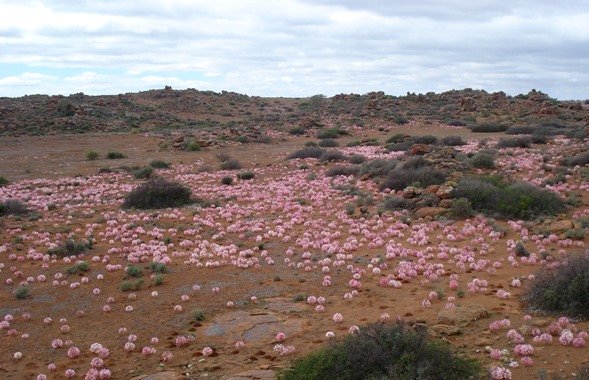Brunsvigia bosmaniae expanding the panorama

Author: Ivan Lätti
Photographer: Judd Kirkel Welwitch
Whoever saw Brunsvigia bosmaniae flower like this in an otherwise grey, western Karoo landscape remembers the sight. The phenomenon can occur when strongly settled, well-adapted plants seed themselves repeatedly over years on suitable land that remains undisturbed for very long.
The spherical fruiting heads detach and roll wind-blown across the veld, scattering seeds over wide areas. Tumbleweed-like seed dispersal can be highly effective in open landscapes.
B. bosmaniae capitalises effectively on opportunities of weather and other conditions to make most of their flowering in boom years, also in the bridging lesser years. Although a winter rainfall species, it responds to showers by flowering profusely about three weeks later, mainly during autumn.
Even here, do not believe that all mature bulbs present are flowering this year. Rest and pacing oneself is part of longevity, true for many species (Duncan, et al, 2016; Manning, 2007; iNaturalist; https://pza.sanbi.org; https://www.worldfloraonline.org).

